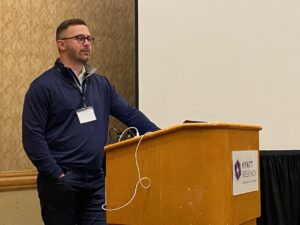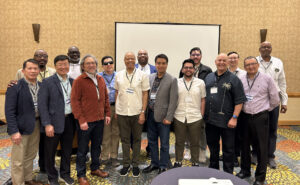
WASHINGTON (BP)–In September 1992, Martin Haskell, an Ohio abortion doctor, described a second-trimester abortion method he named “dilation and extraction” (D&X) in a paper presented at a National Abortion Federation-sponsored seminar.
Following is a chronology of the attempt to prohibit the procedure widely known as partial-birth abortion:
— Early 1993: The National Right to Life Committee obtains Haskell’s paper and later publicizes it and begins a campaign to outlaw the procedure.
— June 1995: Rep. Charles Canady, R-Fla., introduces in the House of Representatives a bill titled the Partial-birth Abortion Ban Act to prohibit the procedure; Sen. Bob Smith, R-N.H., introduces a companion bill in the Senate.
— November 1995: The House of Representatives approves the Partial-birth Abortion Ban Act for first time, 288-139.
— December 1995: The Senate passes the ban for first time, 54-44.
— April 1996: President Clinton vetoes the legislation.
— June 1996: Southern Baptist Convention approves a resolution supporting the ban and disapproving of Clinton’s veto.
— September 1996: House overrides Clinton’s veto with a two-thirds majority, 285-137; Senate falls short of a two-thirds majority, 57-41, thus sustaining the veto.
— March 1997: House passes reintroduced ban, 295-136.
— May 1997: Senate approves ban, 64-36.
— October 1997: Clinton vetoes the ban for a second time.
— July 1998: House overrides veto, 296-132.
— September 1998: Senate falls short in override attempt, 64-36, thus sustaining the veto for a second time.
— October 1999: Senate approves ban in next session of Congress, 63-34.
— April 2000: House passes slightly different version, 287-141; Congress fails to work out a final version to send to the president.
— June 2000: Supreme Court votes 5-4 in Stenberg v. Carhart case to overturn Nebraska’s partial-birth abortion ban, which is modeled after the federal measure.
— June 2002: SBC adopts resolution calling for President Bush to make enactment of a partial-birth abortion ban a priority.
— July 2002: House passes revised version of the Partial-birth Abortion Ban in 274-151 vote. Senate never acts on bill during this session of Congress.
— March 2003: Senate votes 64-33 in favor of ban, but its version includes non-binding resolution endorsing 1973 Roe v. Wade decision legalizing abortion.
— June 2003: House votes 282-139 for ban, minus the resolution endorsing Roe v. Wade.
— September 2003: House-Senate conference committee reports out final bill without Roe resolution.
— October 2003: House approves conference committee report on bill, 281-142; Senate passes conference committee report, 64-34.
— Nov. 5, 2003: President Bush signs the ban into law.
— Nov. 5-6, 2003: Three U.S. District judges issue injunctions preventing law from going in effect. The judges, along with three appellate courts, subsequently strike down the ban as unconstitutional.
— April 18, 2007: U.S. Supreme Court, in 5-4 ruling, reverses lower courts and upholds ban on partial-birth abortion.
–30–















